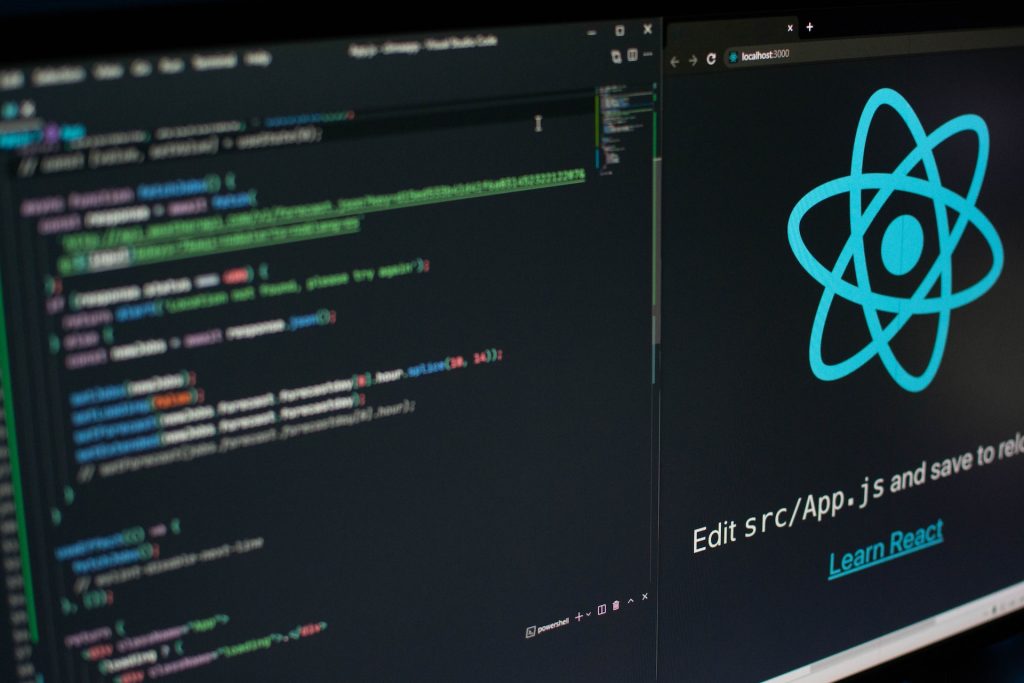
What Are Micro Frontends & When Can You Use Them?
Jerry Wallis
20 min read

Do you ever feel overwhelmed by the complexity of large front-end applications? Have you ever wished for a more modular and flexible way of developing web applications? If so, micro frontends might be the solution you’re looking for!
In recent years, the concept of Micro Frontends has emerged as a popular approach for building web applications. Unlike traditional monolithic applications, these allow you to break down your frontend into smaller, more manageable parts. This can offer a range of benefits, such as increased flexibility, scalability, and faster development cycles. But what are micro frontends? How do they work? And when should you use them?
In this blog post, we’ll take a closer look at micro frontends, exploring their key components and benefits. We’ll discuss some of the most popular tools and frameworks used in building them and provide guidance on when to use them and when not to.
What Are Micro Frontends? 🖥️
A micro frontend is an innovative software architectural approach and frontend web development pattern that breaks down an extensive frontend application into smaller, independent, self-contained units. Each micro frontend is responsible for a specific functionality or feature of the application and can be developed, deployed, and maintained independently. This approach allows developers to create modular applications that are easier to maintain, update, and scale.
So, what makes micro frontends so important? Well, for starters, they allow for greater flexibility and agility in software development. By breaking down a large and complex front-end application into smaller, independent units, developers can create more agile and responsive applications that adapt to the application’s changing requirements.
Micro frontends also allow for faster and more frequent updates. Since each micro frontend can be developed and deployed independently, developers can update specific parts of an application without redeploying the entire application. This approach can significantly reduce the time and effort required to deploy updates, especially for larger applications.
And the best part? These are built using modern web technologies such as HTML, CSS, and JavaScript and can be developed using different frontend frameworks, libraries, and tools. This means that different teams can work on different micro frontends using various technologies, making collaborating and developing applications more straightforward.
All in all, this is an exciting and innovative approach to developing large and complex frontend applications. By breaking down an extensive application into smaller, independent units, developers can create a more modular and flexible architecture that can adapt to the changing requirements of the application.
So, the next time you feel overwhelmed by a complex frontend application, consider using micro frontends to make your development process more accessible and flexible! Now let’s dive deeper into the world of micro frontend development.
Benefits Of Using Micro Frontends ✨
Micro frontends are a cutting-edge method for creating expansive and intricate frontend apps with many advantages over conventional monolithic designs. They differ from monolithic frontends in their architecture and approach to development. Monolithic frontends consist of a single codebase and are typically developed as a single application, making it difficult to change individual components without affecting the entire application. In contrast, micro frontends are built as independent, standalone applications that can be developed and deployed separately.
Micro frontends also allow for greater flexibility and scalability, as new features or changes can be developed and deployed to a specific micro frontend without affecting the entire application. This approach also allows for greater team autonomy, as different teams can work on different frontends simultaneously without having to coordinate changes in the whole application.
Thus, this offers a more modular and flexible approach to frontend development, enabling teams to work more independently and efficiently and allowing for greater agility and scalability in the development process. Let’s understand them in some detail.
🧱 Modularity
Micro frontends are modular because they are designed to be broken down into smaller, more manageable parts. Each micro frontend is responsible for a specific area of functionality within the overall application and can be developed, tested, and deployed independently.
This modular approach allows for greater flexibility and scalability, as new features or changes can be implemented without affecting the entire application. It also makes it easier to maintain and update the application over time, as developers can focus on specific micro frontends rather than having to navigate a large, monolithic codebase.
In addition, these can be developed using different technologies or frameworks as long as they conform to a shared API or contract. This allows teams to use the tools and technologies that work best for them rather than being forced to use a single, monolithic technology stack.
🏃♂️ Agility
Micro frontends are agile because they are designed to facilitate the agile development methodology. By breaking down an application into smaller, more manageable parts, micro frontends make it easier for development teams to work independently and deliver features more quickly and efficiently.
Because each micro frontend is responsible for a specific area of functionality within the application, it can be developed and deployed independently of the other micro frontends. This allows teams to work in parallel, delivering new features and updates more quickly.
Also, micro frontends allow for greater flexibility in terms of technology and tools. Each micro frontend can be developed using the technologies and frameworks that work best for the specific requirements of that component rather than being limited to a single, monolithic technology stack. This enables teams to choose the best tools for the job, leading to faster development times and a more responsive application.
🤝 Collaboration

Micro frontends can facilitate collaboration among teams in several ways, some of which include the following.
- Team Autonomy: By breaking down an application into smaller, independent parts, each team can take ownership of a specific micro frontend and work autonomously. This can reduce dependencies between teams, allowing each team to work at their own pace and make decisions based on the particular needs of their micro frontend.
- Shared Interfaces: They are designed to communicate with each other through well-defined interfaces or APIs. This makes it easier for different teams to work together and share information, as they can rely on a shared understanding of how the micro frontends interact with each other.
- Independent Deployment: Because each micro frontend is developed and deployed independently, teams can change their micro frontend without affecting other parts of the application. This can reduce the risk of conflicts and allow teams to move more quickly without waiting for other teams to complete their work.
- Technology Flexibility: They allow teams to choose the best technologies and frameworks for their specific needs. This helps reduce friction between teams with different technology preferences, as each team can work with the tools they are most comfortable with.
📐 Scalability
Micro frontends are scalable because they are designed to be modular and independent. This makes it possible to scale an application by adding or removing micro frontends as needed without affecting the application’s overall functionality.
Here are some ways in which this approach enables scalability.
- Decentralised Architecture: Micro frontends are built using a decentralised architecture, meaning each can be developed and deployed independently of the others. This allows adding new features or components to an application without disrupting the existing functionality.
- Smaller Codebase: They are smaller in size compared to monolithic applications. This means that they are easier to manage, test, and deploy, which can help to reduce the time and effort required to scale an application.
- Load Balancing: They can be scaled horizontally by adding more instances of each micro frontend to handle increased traffic. This can be achieved through load balancing, which ensures that requests are distributed evenly across multiple instances of a micro frontend.
♻️ Reusability
Micro frontends are reusable because they are designed to be modular and independent components in different contexts and applications. Here are some ways in which micro frontends enable reusability.
- Shared Codebase: Micro frontends can share code and functionality with other parts of an application. This can reduce development time and effort and improve consistency and maintainability across different components.
- Standalone Functionality: Each micro frontend is designed to be a standalone unit of functionality that can be used independently of the other frontends. This means a single micro frontend can be reused across multiple applications or contexts without significant modification.
- Clear Interfaces: These communicate with each other through well-defined interfaces or APIs, which makes it easier to reuse them in different applications or contexts. A micro frontend can be integrated into a separate application or context without requiring significant modification by conforming to a shared interface.
Key Components Of Micro Frontends 🧩
Micro frontends are a complex and innovative software architecture that relies on several key components to function effectively. Here are its essential elements.
👨🔧 Microservices
Microservices are a crucial component of micro frontends. They are small, independent services that communicate with each other through APIs. Microservices can be developed, deployed, and maintained independently, making them a critical component of a micro frontend’s modular architecture.
🛠️ APIs
APIs, or application programming interfaces, facilitate communication between microservices. APIs help ensure that microservices can communicate with each other effectively and securely, making it easier to create a seamless frontend experience for users.
🏗️ Build Systems
Build systems are essential for micro frontends since each micro frontend can be developed using different frontend frameworks, libraries, and tools. In addition, build systems can help ensure that each micro frontend is built, tested, and deployed correctly, making it easier to maintain a consistent and reliable frontend experience.
🔀 Routing

Routing is essential for micro frontends since it helps ensure that each micro frontend is displayed correctly to the user. In addition, routing can help ensure that each micro frontend is shown in the correct order and that the user experience is seamless and consistent.
🎛️ Version Control
Version control is another critical component of micro frontends since each micro frontend can be developed, deployed, and maintained independently. Version control systems like Git can help ensure that each micro frontend is versioned correctly and that changes are tracked and documented effectively.
🎼 Orchestration
Orchestration is the process of managing multiple microservices to ensure that they work together effectively. Orchestration tools like Kubernetes can help ensure that each micro frontend is deployed and managed correctly, making maintaining a consistent and reliable frontend experience easier.
When To Use Micro Frontends 🎯
Building large and complex front-end applications can be a daunting task. However, fear not because micro frontends may be the solution you’re looking for. So, when exactly should you use micro frontends?
Suppose you’re developing an application with multiple teams working on different parts of the frontend. In that case, micro frontends can help ensure that each team can work independently and deploy updates quickly without disrupting the rest of the application. This means you can update specific parts of the application without affecting the rest of the codebase.
Similarly, micro frontends can be a lifesaver when multiple technologies or frameworks are involved in your application. If you’re building an application that uses different frontend frameworks or libraries, micro frontends can ensure that each component can be developed, deployed, and maintained independently.
That said, micro frontends can be a good solution if you need to independently deploy different parts of your application. Each micro frontend is self-contained, so you can deploy updates to specific parts of the application without affecting the rest of the application’s performance.
If you’re developing an application that needs to be scalable, micro frontends can help ensure your application can handle increased traffic or usage. You can scale specific parts of the application independently, making it easier to handle increased demand. If you reuse components across multiple applications, micro frontends can be a good solution. Since each micro frontend is self-contained, you can use them across different applications, making developing and deploying new applications faster.
On a different note, micro frontend architecture can benefit DevOps processes by enabling teams to work in parallel and independently on other parts of the application, resulting in faster development and deployment cycles. With micro frontends, teams can develop and deploy changes to their respective micro frontends without affecting other parts of the application. This helps massively if you want to reduce the risk of errors and downtime.
Also, micro frontend architecture allows for greater flexibility in deployment, as each micro frontend can be deployed independently, enabling continuous delivery and continuous deployment. By breaking down the application into smaller, more manageable components, micro frontend architecture can prove highly beneficial if you want your teams to identify and resolve issues more quickly and efficiently.
When Not To Use Micro Frontends ⛔
Despite the numerous advantages, micro frontends may not always be the best solution for every situation. Often, they may add unnecessary complexity to the development process if you’re developing a small, straightforward frontend application. In this case, traditional monolithic architecture may be a better approach.
Similarly, micro frontends require a significant investment in time and resources to develop and maintain. Therefore, if your development team is small or has limited resources, micro frontends may not be feasible or take more time and effort than a monolithic architecture.

If your frontend components are tightly coupled and have a lot of interdependencies, breaking them down into micro frontends may be challenging and require significant refactoring. So, a monolithic architecture may be a more suitable approach here.
Moreover, while micro frontends can offer benefits in terms of scalability and independent deployment, they may also introduce performance issues if not designed and implemented correctly. Therefore, if your application has strict performance requirements, you may need to consider other architectures offering better performance guarantees.
Another point to note is that micro frontends can introduce security risks such as Cross-Site Scripting (XSS), Cross-Site Request Forgery (CSRF), and Data Injection attacks. These risks can arise due to the increased number of communication channels and dependencies between micro frontends, making it more challenging to secure the overall application. If you have a limited budget and don’t want security issues, then a micro frontend approach may not suit you since security measures like authentication, input validation, and authorisation should be implemented to mitigate the aforementioned risks. Additionally, a Content Security Policy (CSP) can help prevent XSS attacks by restricting the types of content that can be loaded onto the page.
How To Use Micro Frontends 📒
Using micro frontends involves breaking down a large and complex frontend application into smaller, independently deployable units. Choosing the right micro frontend architecture for your project depends on several factors, including your project requirements, team size, and technical expertise. Ultimately, your project’s best choice of micro frontend architecture will depend on various factors, including your requirements, team size, and technical expertise. Therefore, it’s essential to carefully evaluate each option and choose the best fit for your project’s needs.
Here are the key steps involved in using micro frontends.
🔎 Step 1: Identify The Problem
The first step in using micro frontends is identifying the problem you’re trying to solve. For example, is your application becoming too large and complex to manage? Are you having difficulty deploying updates to specific parts of the application without affecting the rest of the codebase? Do you need to reuse components across multiple applications? Micro frontends can help solve these problems and more.
🗃️ Step 2: Divide Your Application
Once you’ve identified the problem, the next step is to divide your application into smaller, more manageable pieces. This can be done by feature or team. Each micro frontend should be self-contained and have its own set of dependencies. This allows independent development, deployment, and maintenance.
🌐 Step 3: Choose Your Technology
One of the benefits of micro frontends is that they allow for the use of different technologies or frameworks within the same application. This can be useful if you have other teams working on different parts of the front end, each with their own preferences. However, it’s important to choose technologies that are compatible with each other and can be integrated seamlessly.
💬 Step 4: Communication & Collaboration
As with any software development project, communication and collaboration are crucial to success. Each team working on micro frontends should communicate with each other regularly to ensure that their work is integrated seamlessly with the rest of the application. This can be achieved through regular meetings, code reviews, and documentation.
🧪 Step 5: Testing & Deployment
Testing and deployment are critical steps in the development process. Each micro frontend should be tested thoroughly before deployment to ensure that it works as expected and doesn’t break any other parts of the application. Deployment should be done independently for each micro frontend to avoid disrupting the rest of the application.

It’s worth noting that the best practices for testing micro frontends include using component-based testing, ensuring cross-browser compatibility, testing in isolation, using automated testing tools, and continuous integration and deployment, among other things.
📊 Step 6: Monitoring & Maintenance
Once your micro frontends are deployed, monitoring them regularly is essential to ensure that they’re performing as expected. Any issues or bugs should be addressed promptly to avoid affecting the rest of the application. In addition, maintenance should be done independently for each micro frontend, allowing for updates and fixes without disrupting the rest of the codebase.
Tools For Micro Frontend Development 🧰
Micro frontends are becoming increasingly popular for building large and complex web applications. But developing micro frontends requires a different approach than traditional frontend development and, therefore, requires specific tools to ensure the process is seamless. Here are some of the essential tools for micro frontend development.
- Module Bundlers: Module bundlers help you manage dependencies between modules and components. They allow you to break your application into smaller, modular pieces and then bundle them together for deployment. Popular module bundlers for micro frontend development include Webpack, Rollup, and Parcel.
- Package Managers: Package managers are tools that help you manage the dependencies for your application. They allow you to specify the required dependencies for each module or component and manage them efficiently. Popular package managers for micro frontend development include npm and Yarn.
- Version Control Systems: Version control systems are tools that allow you to track changes to your code over time. They provide a way to collaborate with other developers, manage multiple branches of code, and ensure that changes are properly tested and deployed. Popular version control systems for micro frontend development include Git and SVN.
- Continuous Integration & Deployment (CI/CD) Tools: CI/CD tools help you automate the build, testing, and deployment. They provide a way to ensure that changes are properly tested and deployed promptly and consistently. Popular CI/CD tools for micro frontend development include Jenkins, CircleCI, and Travis CI.
- Testing Frameworks: Testing frameworks allow you to test your code to ensure it works as expected. They provide a way to automate the testing process and catch errors and bugs before they make it into production. Popular testing frameworks for micro frontend development include Jest, Mocha, and Jasmine.
- Monitoring & Debugging Tools: Monitoring and debugging tools help you identify and fix issues with your application in real-time. They provide a way to track errors, identify performance issues, and ensure your application runs smoothly. Widespread monitoring and debugging tools for micro frontend development include New Relic, AppDynamics, and Dynatrace.
Frameworks For Micro Frontend Development 🧮
To make the most of micro frontends, developers must use a framework supporting this architectural approach. Fortunately, several frameworks make developing and maintaining micro frontend applications easy. This section will explore some of the most popular frameworks for micro frontend development.
Whether you have a team of seasoned developers or just getting started with micro frontends, these frameworks can help your company build scalable, maintainable web applications that are easy to deploy and update. From React and Vue.js to Single-Spa and Angular, there are plenty of options to choose from. So, let’s dive in and see what each framework offers.
⚛️ React
React is a popular JavaScript library for building web applications, including micro frontends. It allows you to create reusable UI components, which can be used across different parts of your application. React also provides a way to manage state and data flow within your application.

🅰️ Angular
Angular is a comprehensive framework that provides a range of features and tools for building web applications, including micro frontends. It allows you to create reusable components, manage data and state, and provide a consistent user experience across different parts of your application.
🔰 Vue.js
Vue.js is a progressive JavaScript framework that is gaining popularity among developers. It provides a simple and elegant way to build user interfaces and manage data within your application. In addition, Vue.js is lightweight and easy to learn, making it an excellent choice for building micro frontends.
🕸 Web Components
Web Components is a set of standards that allows you to build reusable UI components that can be used across different web applications, including micro frontends. Web Components provide a way to encapsulate HTML, CSS, and JavaScript code into reusable components, making it easy to build and maintain complex applications.
👨💻 Single-Spa
Single-spa is a JavaScript framework for building micro frontends. It allows the combining of multiple JavaScript frameworks and libraries into a single application. In addition, single-spa provides a way to manage dependencies between different micro frontends and ensures they work seamlessly together.
Final Words: What Are Micro Frontends? 📋
Micro frontends are innovative in building large and complex web applications. By breaking down monolithic applications into smaller, independent components, micro frontends provide a scalable and flexible architecture that allows teams to work independently and focus on their specific areas of expertise. Micro frontends also offer a range of benefits, including faster development times, increased flexibility and scalability, improved performance and reliability, and reduced maintenance costs.
The future of micro frontends looks promising as it offers increased agility, scalability, and flexibility in building complex applications. With the rise of serverless architecture and cloud computing, micro frontends can be used to build highly available, fault-tolerant, and resilient applications. As organisations continue to adopt a microservices architecture, the demand for micro frontends is expected to grow. However, challenges such as security, testing, and deployment still need to be addressed to ensure the success of micro frontends.
Also, micro frontends are not a silver bullet solution; there are also some challenges and considerations to consider when implementing this architecture. These challenges include the increased complexity of coordinating multiple teams, potential performance issues, and the need for specialised tooling and frameworks.
Ultimately, choosing micro frontends depends on your project’s specific needs and requirements. For example, micro frontends may be the right choice if you are building a large and complex application that requires collaboration between multiple teams. However, if you have a small or straightforward application, the added complexity of micro frontends may be optional.
If you have any further questions or curiosity about micro frontends, feel free to reach out to us for a friendly discovery chat.
Topics
Published On
March 29, 2023

